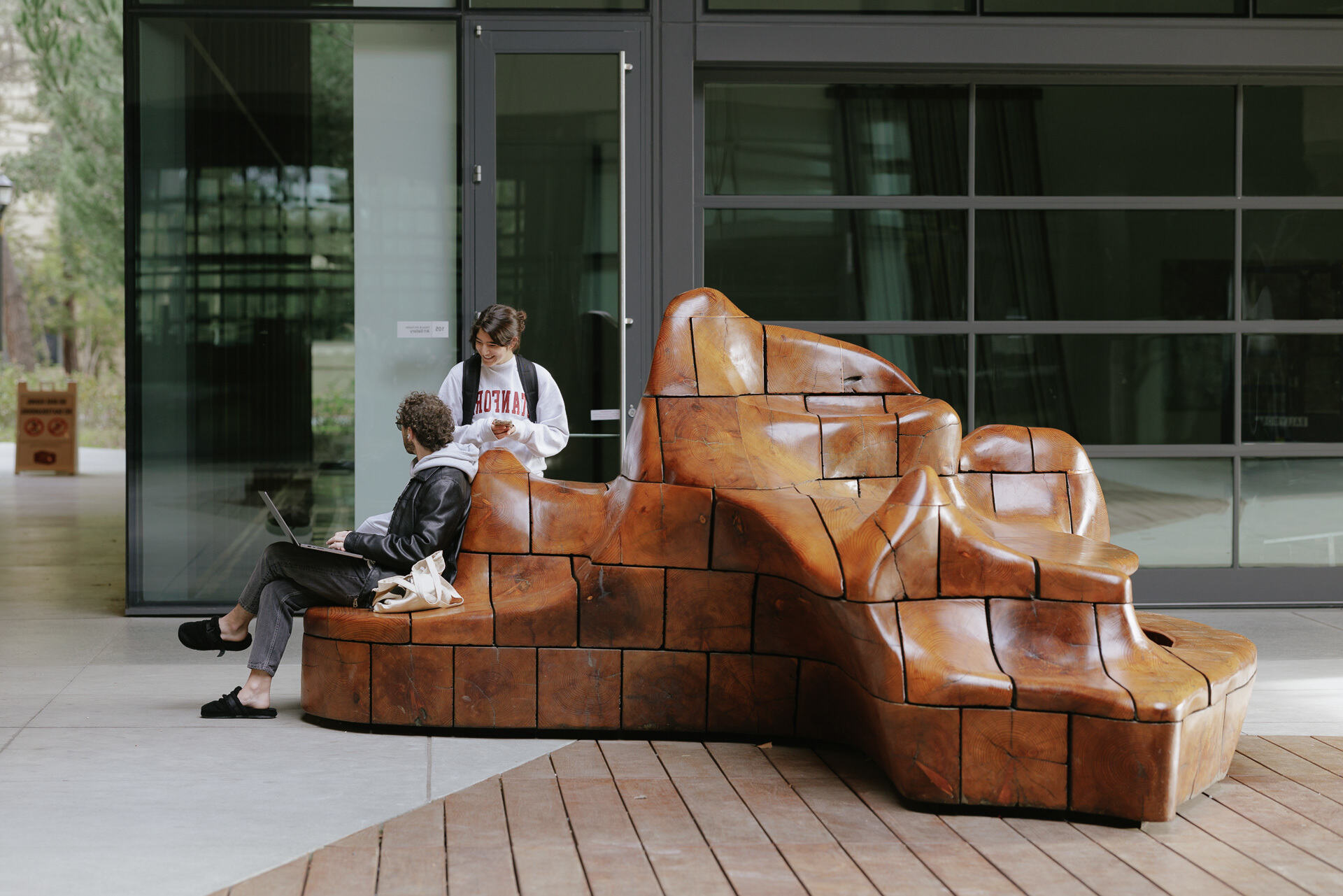
Art and architecture have shaped human history in countless ways. From ancient pyramids to modern skyscrapers, these creative expressions reflect our cultures, beliefs, and advancements. Art captures emotions, tells stories, and preserves moments in time. Architecture provides shelter, defines spaces, and influences how we live and interact. Both fields have evolved, blending tradition with innovation. Imagine walking through a city where every building tells a story, or visiting a museum where each painting speaks to your soul. Art and architecture are not just about aesthetics; they are about understanding humanity. Ready to learn some intriguing facts? Let's dive in!
Key Takeaways:
- Art and architecture have shaped human history, from the enigmatic smile of the Mona Lisa to the towering marvel of the Burj Khalifa. Creativity knows no bounds in the world of visual arts.
- The fusion of art and technology has opened up new frontiers, from digital art to 3D printing and virtual reality. The future of creativity is boundless and full of exciting possibilities.
Art: A Window to Human Creativity
Art has been a fundamental part of human culture for millennia. It reflects our emotions, beliefs, and experiences. Here are some fascinating facts about art:
-
The Mona Lisa by Leonardo da Vinci is one of the most famous paintings in the world. It is known for its mysterious smile and has been on display at the Louvre Museum in Paris since 1797.
-
Vincent van Gogh only sold one painting during his lifetime, "The Red Vineyard." Despite his lack of commercial success, his works are now some of the most valuable in the world.
-
Pablo Picasso could draw before he could walk. His first word was "pencil," and he completed his first painting at the age of nine.
-
The Starry Night by Vincent van Gogh was painted while he was in a mental asylum. The swirling patterns in the sky are thought to reflect his turbulent state of mind.
-
Michelangelo was only 24 years old when he completed his famous sculpture, "David." This masterpiece of Renaissance art stands 17 feet tall and is carved from a single block of marble.
Architectural Marvels: Wonders of Human Ingenuity
Architecture showcases human innovation and creativity through structures that stand the test of time. Here are some intriguing facts about architecture:
-
The Great Wall of China is the longest wall in the world, stretching over 13,000 miles. It was built to protect against invasions and took over 2,000 years to complete.
-
The Eiffel Tower in Paris was initially criticized by many prominent artists and intellectuals. Today, it is one of the most recognizable structures in the world.
-
The Colosseum in Rome could hold up to 80,000 spectators. It was used for gladiatorial contests and public spectacles, including mock sea battles.
-
The Burj Khalifa in Dubai is the tallest building in the world, standing at 828 meters (2,717 feet). It has 163 floors and took six years to build.
-
The Taj Mahal in India is a mausoleum built by Emperor Shah Jahan in memory of his wife Mumtaz Mahal. It is considered one of the most beautiful buildings in the world.
Art Movements: Shaping the Course of History
Art movements have defined different eras and influenced countless artists. Here are some key facts about various art movements:
-
Impressionism began in the late 19th century with artists like Claude Monet and Edgar Degas. It focused on capturing light and movement rather than detailed realism.
-
Cubism, pioneered by Pablo Picasso and Georges Braque, broke objects into geometric shapes. This movement revolutionized European painting and sculpture.
-
Surrealism emerged in the 1920s, inspired by the unconscious mind. Artists like Salvador Dalí created dream-like scenes with bizarre, fantastical elements.
-
Abstract Expressionism developed in the 1940s and 1950s in New York City. Artists like Jackson Pollock used spontaneous techniques to create non-representational works.
-
Pop Art emerged in the 1950s and 1960s, drawing inspiration from popular culture. Andy Warhol and Roy Lichtenstein are two of the most famous Pop Art artists.
Architectural Styles: Evolution Through Time
Architecture has evolved through various styles, each reflecting the cultural and technological advancements of its time. Here are some notable architectural styles:
-
Gothic architecture flourished in Europe during the High and Late Middle Ages. It is characterized by pointed arches, ribbed vaults, and flying buttresses.
-
Baroque architecture emerged in the late 16th century in Italy. It is known for its grandeur, dramatic use of light, and ornate details.
-
Neoclassical architecture drew inspiration from the classical architecture of ancient Greece and Rome. It became popular in the 18th and early 19th centuries.
-
Art Deco originated in the 1920s and 1930s. It features bold geometric shapes, vibrant colors, and lavish ornamentation.
-
Modern architecture emerged in the early 20th century, emphasizing simplicity and function. Architects like Le Corbusier and Frank Lloyd Wright were pioneers of this style.
Famous Artworks: Icons of Culture
Certain artworks have become cultural icons, recognized and revered worldwide. Here are some facts about these masterpieces:
-
The Last Supper by Leonardo da Vinci depicts Jesus and his disciples during the final meal before his crucifixion. It is located in the Convent of Santa Maria delle Grazie in Milan.
-
The Scream by Edvard Munch is one of the most famous expressions of existential angst. There are several versions of this painting, with the most famous housed in the National Gallery of Norway.
-
Guernica by Pablo Picasso is a powerful anti-war painting. It was created in response to the bombing of the Basque town of Guernica during the Spanish Civil War.
-
The Persistence of Memory by Salvador Dalí features melting clocks in a surreal landscape. This painting is one of the most recognizable works of Surrealism.
-
Girl with a Pearl Earring by Johannes Vermeer is often referred to as the "Mona Lisa of the North." The painting is renowned for its captivating portrayal of a young girl.
Architectural Feats: Pushing Boundaries
Architects have continually pushed the boundaries of what is possible, creating structures that defy conventional limits. Here are some remarkable architectural feats:
-
The Sydney Opera House in Australia is famous for its unique sail-like design. It took 14 years to build and is considered a masterpiece of modern architecture.
-
The Sagrada Família in Barcelona, designed by Antoni Gaudí, has been under construction since 1882. It is expected to be completed by 2026, marking the centenary of Gaudí's death.
-
The Petronas Towers in Kuala Lumpur were the tallest buildings in the world from 1998 to 2004. They are connected by a skybridge on the 41st and 42nd floors.
-
The Millau Viaduct in France is the tallest bridge in the world, with one of its masts reaching 343 meters (1,125 feet). It spans the Tarn River valley and is an engineering marvel.
-
The Lotus Temple in New Delhi is shaped like a lotus flower. It is a Bahá'í House of Worship and has won numerous architectural awards for its design.
Art and Technology: A New Frontier
The intersection of art and technology has opened up new possibilities for creativity and expression. Here are some facts about this exciting frontier:
-
Digital art has become increasingly popular, with artists using software to create intricate and innovative works. Programs like Adobe Photoshop and Procreate are widely used in the digital art community.
-
3D printing has revolutionized sculpture and design. Artists can now create complex structures that would be impossible to craft by hand.
-
Virtual reality (VR) is being used to create immersive art experiences. Artists can build entire virtual worlds that viewers can explore using VR headsets.
-
Artificial intelligence (AI) is being used to generate art. AI programs like DeepArt and DALL-E can create images based on text descriptions or existing artworks.
-
Projection mapping is a technique where video is projected onto surfaces to create dynamic, interactive displays. It is often used in public art installations and performances.
Art and Architecture: Timeless Wonders
Art and architecture have always fascinated people. From ancient pyramids to modern skyscrapers, these creations tell stories of human ingenuity and culture. They reflect societies' values, beliefs, and technological advancements. Art, whether a painting or sculpture, captures emotions and moments, making them timeless. Architecture, on the other hand, shapes our environment, influencing how we live and interact.
Both fields inspire creativity and innovation. They challenge us to think differently and appreciate beauty in various forms. Understanding their history and significance helps us value our heritage and envision future possibilities. So next time you admire a piece of art or a building, remember the rich history and effort behind it. These wonders are not just structures or images; they're legacies of human achievement and imagination. Keep exploring, appreciating, and learning from these timeless wonders.
Frequently Asked Questions
Was this page helpful?
Our commitment to delivering trustworthy and engaging content is at the heart of what we do. Each fact on our site is contributed by real users like you, bringing a wealth of diverse insights and information. To ensure the highest standards of accuracy and reliability, our dedicated editors meticulously review each submission. This process guarantees that the facts we share are not only fascinating but also credible. Trust in our commitment to quality and authenticity as you explore and learn with us.


